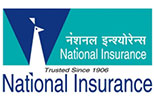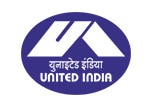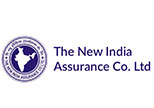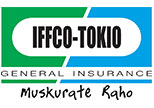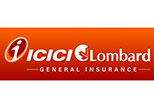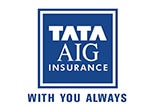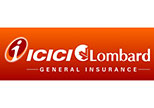Angioplasty Cost in India: A Complete Guide (2025)
Critical illnesses are becoming more common today. Eating unhealthy food, not exercising, and having too much stress are negatively affecting us and increasing the risk of problems like heart attacks and blockages. While doctors prescribe medicines as the first line of defense, they recommend heart stent surgery called Angioplasty when there is a high percentage of blockage in the arteries.
Key Highlights
-
Angioplasty is a heart procedure that improves blood flow by opening blocked arteries. It’s often suggested when someone has chest pain or suffers a heart attack.
-
Factors like the type of procedure, hospital, city, and kind of stent for heart blockage influence the cost of angioplasty in India.
-
Estimated costs range from Rs. 30,000 to Rs. 5,00,000, with balloon angioplasty, stent types, and advanced methods like laser angioplasty.
-
Health insurance can ease the financial burden by covering hospital bills, tests, and medicines.
What is Angioplasty?
Angioplasty is a heart stent surgery that opens blood vessels in the heart when they are blocked or narrowed. These vessels/arteries carry oxygen-rich blood to the heart. The main reason behind the blockage is the buildup of fat or cholesterol that causes chest pains and heart attacks.
When Do You Require Angioplasty?
Doctors usually suggest angioplasty surgery if:
-
You have chest pain that won’t go away with medicine.
-
You feel tired or out of breath while walking or climbing stairs.
-
Tests show your heart isn’t getting enough blood.
-
You’ve had a heart attack and need quick treatment to open the blocked artery.
How is Angioplasty Performed?
Although angioplasty surgery can vary based on the heart’s condition, it usually follows these basic steps:
-
Doctors give medicine to help relax and numb the pain. Then, they make a small cut in the arm or groin (upper leg) and gently insert a thin, flexible tube (catheter) in a blood vessel.
-
They use a special X-ray machine to see where it’s going and guide it to a person’s heart. Once the catheter reaches the blocked area, a tiny balloon at the tip of the tube is slowly blown up. It pushes the blockage aside and allows blood to flow freely.
-
Doctors may also place a small metal mesh tube called a stent. It stays inside the artery to keep it open and functioning in the long run.
-
After everything is done, doctors remove the catheter and cover the cut with a bandage. Patients are monitored for a few days before returning to their everyday lives.
How Much Does Angioplasty Cost in India?
The angioplasty surgery cost in India depends on multiple parameters like city, status of the hospital, and the type of procedure. Some hospitals can charge more for using advanced machines or providing extra care. The surgery cost can also change depending on the number of stents and the type of stent (regular or drug-coated) used. Below is the approximate amount for every kind of angioplasty surgery.
|
Type of Angioplasty |
Estimated Cost Range (INR) |
|
Stent Placement |
Rs. 1,00,000 to Rs. 1,75,000 |
|
Cerebral Angioplasty |
Rs. 30,000 to Rs. 45,000 |
|
Balloon Angioplasty |
Rs. 75,000 to Rs. 1,25,000 |
|
Drug-Eluting Stent (DES) |
Rs. 1,50,000 to Rs. 2,50,000 |
|
Laser Angioplasty |
Rs. 2,00,000 to Rs. 3,00,000 |
|
Renal Artery Angioplasty |
Rs. 4,25,000 to Rs. 5,00,000 |
|
Peripheral Angioplasty |
Rs. 48,000 to Rs. 60,000 |
Risks Associated with Angioplasty
Angioplasty is a safe procedure with minimal incisions. But like any other medical treatment, it carries the following risks that can be avoided with the doctor’s supervision and guidance.
-
Bleeding or bruising: This can happen where the catheter is inserted, usually in the groin or wrist.
-
Blood clots: Clots can form in the stent or artery, leading to a heart attack.
-
Artery re-narrowing (restenosis): The treated artery may narrow again over time.
-
Kidney problems: The dye used during angioplasty can affect kidney function, especially in people with kidney issues.
-
Infection: There’s a small chance of infection at the catheter insertion point.
Steps for Recovery After Coronary Angioplasty
Recovering after coronary angioplasty takes care and attention. Here’s what to focus on:
Rest for a Few Days
Take it easy for at least 1–2 days after the procedure. Avoid lifting heavy items or doing anything physically demanding.
Care for the Insertion Site
Keep the area (usually the wrist or groin) clean and dry. Watch for swelling, bleeding, or unusual pain. Immediately contact your doctor in case of trouble.
Take Medicines as Prescribed
Don’t skip any medication. Blood thinners and other heart medicines help prevent clots and support healing.
Follow a Heart-Healthy Diet
Eat more fruits, vegetables, whole grains, and lean protein. Cut down on salt, sugar, and oily foods. A good diet helps prevent future blockages.
Quit Smoking and Limit Alcohol
Smoking and drinking narrow blood vessels and raise the risk of another blockage.
Start Light Exercise
Begin with short walks after a few days, as advised by your doctor. Slowly increase activity over time. Avoid intense workouts until your doctor gives the green light.
How can health insurance support you during Angioplasty treatment?
You don’t buy health insurance to prevent an illness. You buy it to cover medical expenses arising out of it.
Everyone can’t afford to pay for angioplasty surgery. That’s where health insurance comes into the picture. It covers doctor’s fees, surgery costs, medicines, and tests before and after the surgery (based on the terms and conditions of the policy). Health plans also offer cashless treatment and allow policyholders to enjoy the flexibility of not paying a single penny from their wallets. This makes it easier to get the necessary care without worrying about money.
Angioplasty is a common heart stent surgery that can save lives. It allows arteries to function properly and avoid future blockage. As the chances of having such a surgery increase with age, it’s advisable to have health insurance. It acts as a financial umbrella by covering the hospitalisation expenses and allows policyholders to focus on their recovery.





















